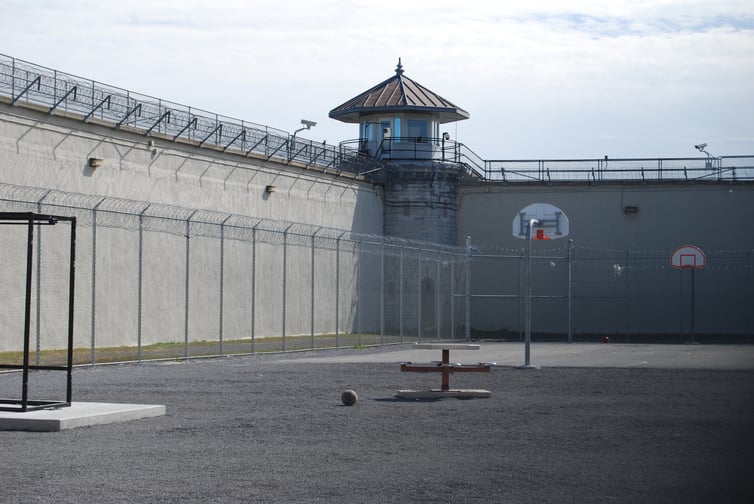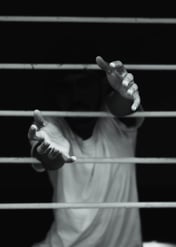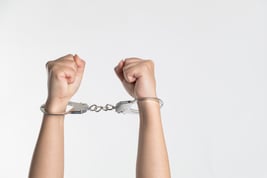
Social work offers case workers a unique perspective on the social issues that affect society. They often see the “big picture” more clearly than politicians or even clergy. We asked our social work colleagues what they see as the big social issues and what initiatives they consider most pressing for 2019. One issue rose above all others.
Mass Incarceration
 Mass incarceration was at the top of the list. Everyone knows that the United States leads the world in incarceration, and the past 20 years have seen significant increases in the numbers of individuals incarcerated or under other forms of criminal justice supervision in the United States. These numbers are staggering—approximately 7.1 million adults in the United States are under some form of criminal justice supervision. The large increase in the criminal justice population reflects, in part, tougher laws and penalties for drug offenses. An estimated one-half of all prisoners (including some sentenced for other than drug offenses) meet the criteria for diagnosis of drug abuse or dependence.
Mass incarceration was at the top of the list. Everyone knows that the United States leads the world in incarceration, and the past 20 years have seen significant increases in the numbers of individuals incarcerated or under other forms of criminal justice supervision in the United States. These numbers are staggering—approximately 7.1 million adults in the United States are under some form of criminal justice supervision. The large increase in the criminal justice population reflects, in part, tougher laws and penalties for drug offenses. An estimated one-half of all prisoners (including some sentenced for other than drug offenses) meet the criteria for diagnosis of drug abuse or dependence.
A Brief History of The War on Drugs
- The Smoking Opium Exclusion Act was the first modern law designed to prevent the use of drugs. In 1909, it banned the possession, importation and use of opium for smoking.
- In 1914, Congress passed the Harrison Act, which regulated and taxed the production, importation, and distribution of opiates and cocaine.
- In 1937, the “Marihuana Tax Act” was passed. This federal law placed a tax on the sale of cannabis, hemp, or marijuana.
- In 1970, President Richard M. Nixon signed the Controlled Substances Act (CSA) into law. This statute called for the regulation of certain drugs and substances.
After Nixon resigned his office, his domestic policy czar, John Ehrlichman confessed to the corrupt motives behind this original initiative to criminalize drug use that affected the way Americans have viewed drug use ever since.
 Ehrlichman was quoted as saying: “We knew we couldn’t make it illegal to be either against the war or black, but by getting the public to associate the hippies with marijuana and blacks with heroin, and then criminalizing both heavily, we could disrupt those communities. We could arrest their leaders, raid their homes, break up their meetings, and vilify them night after night on the evening news. Did we know we were lying about the drugs? Of course, we did.”
Ehrlichman was quoted as saying: “We knew we couldn’t make it illegal to be either against the war or black, but by getting the public to associate the hippies with marijuana and blacks with heroin, and then criminalizing both heavily, we could disrupt those communities. We could arrest their leaders, raid their homes, break up their meetings, and vilify them night after night on the evening news. Did we know we were lying about the drugs? Of course, we did.”
- In the 1980s, President Ronald Reagan reinforced and expanded many of Nixon’s War on Drugs policies. In 1984, his wife, Nancy Reagan, launched the “Just Say No” campaign to educate youth on the dangers of drug use.
- Continuing the original misguided efforts of Nixon and Ehrlichman, in 1986 Congress passed the Anti-Drug Abuse Act which established mandatory minimum prison sentences for certain drug offenses.
- The Clinton, Bush, and Obama administrations continued to criminalize drug use in the same spirit.
First a Disease – Then a Crime
 Despite increasing evidence that addiction is a treatable disease of the brain, most individuals do not receive treatment. Involvement in the criminal justice system often results from illegal drug-seeking behavior and participation in illegal activities that reflect, in part, disrupted behavior ensuing from brain changes triggered by repeated drug use. On average, incarceration in the United States costs approximately $22 000 per month, per person, and there is little evidence that this strategy reduces drug use or drug-related re-incarceration rates for nonviolent drug offenders. On the other hand, there is increasing evidence that treating drug-involved offenders provides a unique opportunity to decrease substance abuse and reduce associated criminal behavior.
Despite increasing evidence that addiction is a treatable disease of the brain, most individuals do not receive treatment. Involvement in the criminal justice system often results from illegal drug-seeking behavior and participation in illegal activities that reflect, in part, disrupted behavior ensuing from brain changes triggered by repeated drug use. On average, incarceration in the United States costs approximately $22 000 per month, per person, and there is little evidence that this strategy reduces drug use or drug-related re-incarceration rates for nonviolent drug offenders. On the other hand, there is increasing evidence that treating drug-involved offenders provides a unique opportunity to decrease substance abuse and reduce associated criminal behavior.
Incarceration Doesn’t Work
The inadequacy of incarceration by itself in addressing drug abuse or addiction is evident in the statistics. A review of recidivism in 15 states found that one-quarter of individuals released returned to prison within three years for technical violations that included, among other things, testing positive for drug use.
Treatment Does
 Research over the last two decades has consistently reported the beneficial effects of treatment for the drug abuser in the criminal justice system. These interventions include therapeutic alternatives to incarceration, treatment merged with judicial oversight in drug courts, prison- and jail-based treatments, and reentry programs intended to help offenders transition from incarceration back into the community.
Research over the last two decades has consistently reported the beneficial effects of treatment for the drug abuser in the criminal justice system. These interventions include therapeutic alternatives to incarceration, treatment merged with judicial oversight in drug courts, prison- and jail-based treatments, and reentry programs intended to help offenders transition from incarceration back into the community.
We Were Deceived
Social workers tell us that one of their major initiatives for 2019 is to change the public’s perception of drug abuse from criminal behavior to a mental disorder that can be treated. John Ehrlichman and Richard Nixon lied to us. It's time to expose the lie and address the real issues.

